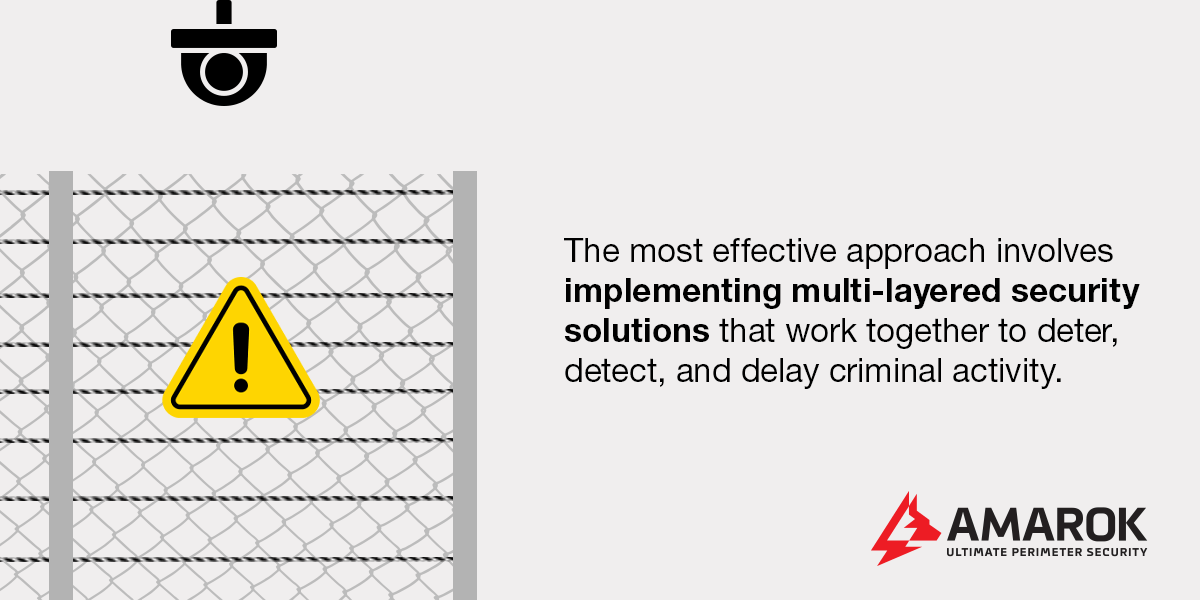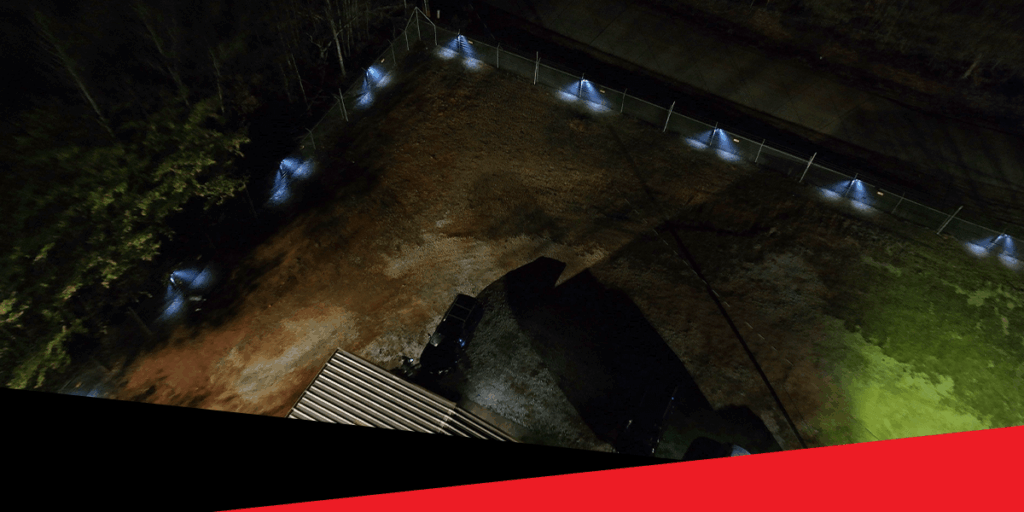In 2024, over 6.4 million property crime incidents were reported. Given this high volume of theft, burglary, and other property crimes, police departments can quickly become overwhelmed, which results in slower dispatch times.
Average police response rates vary across counties and cities, with cities like Dallas having an average response time of 15 minutes to Priority 1 calls. While 15 minutes may seem like a reasonable amount of time, the fact is that thieves are faster — and this discrepancy results in a critical security gap for businesses nationwide.
Many business owners rely on their proximity to police stations to feel protected, but the reality reveals a dangerous gap between when crimes occur and when officers arrive. Understanding this vulnerability and implementing proactive perimeter security measures can mean the difference between devastating losses and keeping your assets protected.
The Problem With Relying on Police Response
Data from the National Police Association shows that the average response time for Priority 1 calls is 10 minutes. This delay becomes critical when considering that, for example, experienced thieves take less than five minutes to steal a catalytic converter, and organized groups can clear valuable inventory even faster when they work together.
Delays in police response are common for many reasons:
- Staffing shortages: A recent survey of Police Executive Research Forum members found that half of the agencies had fewer officers compared to four or five years ago.
- Call prioritization: Property crimes rank below violent crimes and medical emergencies in dispatch protocols, which makes a property crime report less likely to receive a timely response.
- Geographic challenges: Large patrol areas mean longer travel times between calls.
- Multiple incidents: High crime periods can overwhelm available units, resulting in slower police incident response times overall.
Criminals exploit these response gaps with devastating efficiency, making it difficult for officers to respond fast enough. Organized groups may even use sophisticated tactics, including lookouts, synchronized timing, and multiple escape routes to ensure they’re gone before the first patrol car arrives.
You may assume that because your site or facility is near a police station, officers will respond faster. However, dispatch protocols outline that property crime reports are de-prioritized in the face of more urgent calls, which means a longer wait time. Even in ideal conditions, the time needed to receive a call, dispatch units, and travel to the scene exceeds how long it takes for many thieves to get in and get out.
Relying solely on police response to protect your property from crime has a negative financial and operational impact:
- The cost of replacing stolen goods is high and difficult to recoup.
- Insurance premiums increase following claims after theft.
- Repeated incidents of theft can damage morale and create safety concerns that affect employee retention.
- Customers may question the reliability of businesses that cannot protect their own assets.

How to Protect Your Business in 6 Steps
A smarter approach to physical security requires acknowledging that police incident response alone cannot prevent property crimes. The most effective approach involves implementing multi-layered security solutions that work together to deter, detect, and delay criminal activity.
1. Safeguard Your Perimeter With Electric Fencing
Electric fencing is the foundation of proactive perimeter security. Installed inside your existing fencing, an electric security fence creates an active deterrent that stops thieves before they have the chance to enter your site.
An electric fence delivers a medically safe but memorable shock if a criminal tries to tamper with it, deterring their attempt to access your property. The psychological deterrent of yellow warning signs also helps dissuade opportunistic criminals from trying to break in.
2. Utilize Surveillance Cameras and Remote Monitoring
Strategic camera placement transforms passive monitoring into active threat detection. Video surveillance systems keep watch over your entire perimeter to monitor as many angles as possible. Investing in a remote monitoring solution allows security professionals to monitor your business 24/7 to ensure a rapid response. The system also records and stores footage, making it easier to prosecute criminals with video evidence.
3. Invest in Alarm-Based Lighting
Perimeter alarm-based lighting systems activate only when the electric fence goes into alarm. This approach is more effective than constant illumination since it denies criminals the ability to study and plan around predictable lighting patterns.
The sudden flood of bright light disrupts criminal activity while improving camera visibility. Zone Fence Lighting targets specific areas along your perimeter, while Spot Lighting focuses intense illumination on high-value areas.
4. Control Access Points to Limit Entry
Gate Access Control ensures that only authorized individuals enter your property. Features like credential readers and automated barriers work together to create secure checkpoints, while the system also documents every entry and exit. This solution is essential for warehouse facilities handling high-value inventory as well as trucking operations.
Integration with your electric fencing enables automatic lockdowns when the fence alarms are triggered, preventing criminals from entering your premises.
5. Protect Your Buildings With Intrusion Detection
Building intrusion detection systems use motion detectors, door contacts, and specialized sensors to protect critical buildings on your property. Real-time alerts enable immediate response in the event of unauthorized access. Security teams can assess threats remotely and coordinate with law enforcement while criminals are still on-site, dramatically improving apprehension rates.
6. Train Employees to Respond Effectively
Technology requires human support to achieve maximum effectiveness. Training programs should be routine, covering threat recognition, alarm response procedures, and personal safety protocols. Clear instructions help employees understand when to observe and report versus when to prioritize their own safety.
Routine safety drills reinforce proper procedures, while updated emergency contact lists ensure smooth communication during incidents. Building a culture of security where employees feel empowered to report suspicious activity is a key part of preventing crime before it occurs.
Get Started With Proactive Perimeter Security from AMAROK
Businesses that rely solely on police response may face devastating losses without proper protection. Investing in a unified security system allows you to prevent theft, rather than waiting for officers to arrive after the fact.
AMAROK’s multi-layered approach all starts with The Electric Guard Dog™ Fence. Our customers save an average of $120,000 annually by replacing expensive security guards with our integrated perimeter security solutions.
Take control of your physical security today. Contact us online to start protecting your property, people, and profits without relying on police response.






